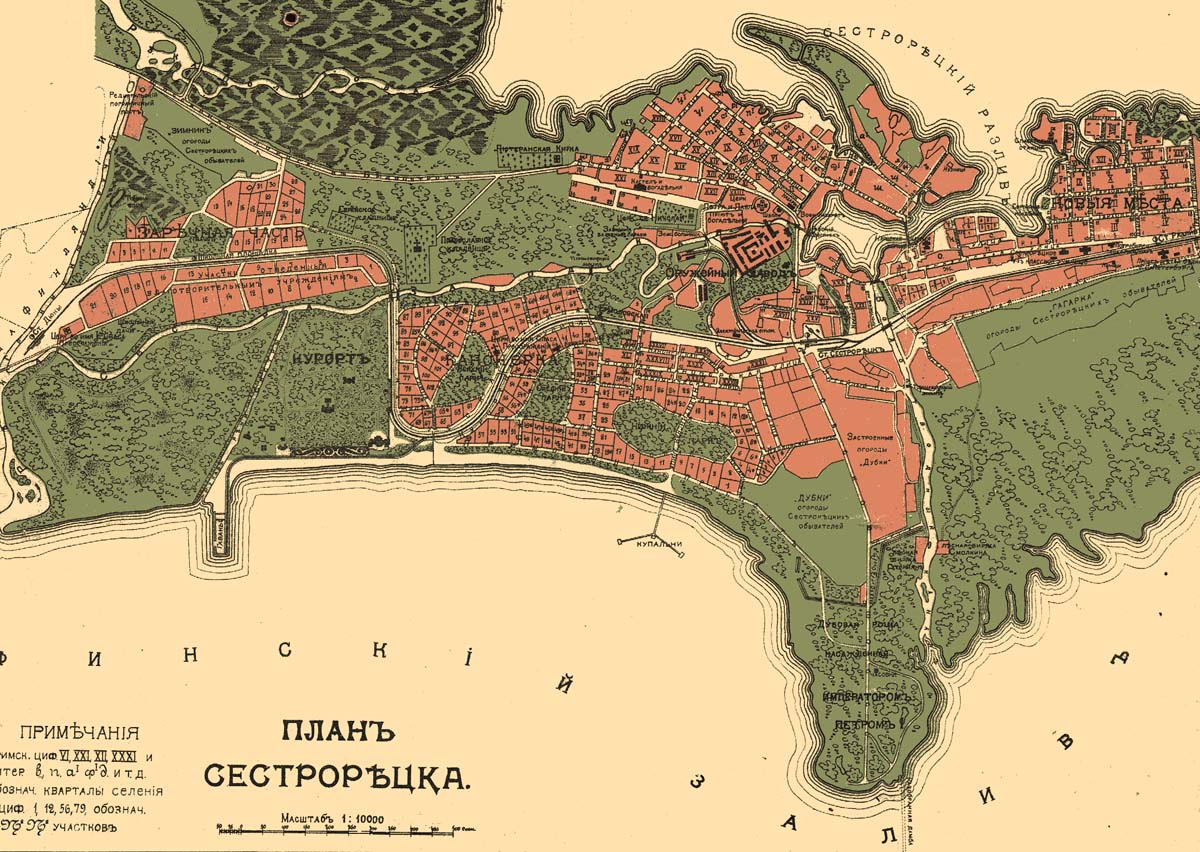Sestroretsk is located 28 verst (34 kilometers) northwest of St. Petersburg on the shores of the Gulf of Finland, the Sestra River and the Razliv Lake.
The cottage area Sestroretsk is built up with good and comfortable houses... The cottages are located in a beautiful pine forest near the Gulf of Finland. For a walk around, in addition to the picturesque surroundings, dry groves and forests, is the "Dubki" park.
V. Simansky. Petersburg Country Areas.
Issue II. Spb., 1892. Pp.11-14
The terminal station of the Sestroretsk Seaside Railway is a health resort which offers baths for sea swimming, hydropathic and many more therapeutic establishments. There are splendid gardens, concert and military bands.
F.Raevsky. Petersburg with its Environs. Saint Petersburg, [1902].
Sestroretsk is a small town located on the very boundary between St. Petersburg and Vyborg administrative provinces, next to the Gulf of Finland of the Baltic Sea, near the Razliv Lake created by a dam that was constructed across the Chernaia and Sestra Rivers for the purpose of supplying necessary water power for the arms factory. The lake is about eight versts long (one verst = 3500 ft.) and three versts wide. Most people in Sestroretsk are employed at the government arms factory. Sestroretsk is a favourite country haunt for holiday visitors. There is a health resort built on the seashore.
The Memory Book of St. Petersburg Administrative Province. St. Petersburg, 1905.
Sestroretsk was a small town with clean streets and cheerful houses. The major employer in Sestroretsk was the well known old arms factory where, at that time, manufactured legendary Mosin Nagant rifles that were used by the Russian Army for over 40 years starting in the early 1890s. At the factory was a firing range for testing finished rifles. The sound of shooting could be heard from there for days. Many holiday visitors came at the place. Good beaches, the celebrated "Dubki" park - the oaks planted during the reign of Peter the First, pine woods, a picturesque lake as well as the close proximity of the health resort to the city attracted guests from Saint Petersburg.
The health resort included a small clinic surrounded by pines, an expensive restaurant and a great concert hall that was a wooden building of interesting design. In summer, the continuously performing symphony orchestra gave regular concerts at this hall. The hall could serve as a ballroom and offered also balls.
Opposite the park, there was a long dam with a wharf which was reached by a railway line. The line passed here straight through the beach, between two low fences. A glassed gallery for walking in when it rains, extended along the railway parallel to the coast.
Zasosov D.A., Pyzin V.I. Saint Petersburg Life of the 1890s-1910s.
Notes of Witnesses. Leningrad, 1991.


